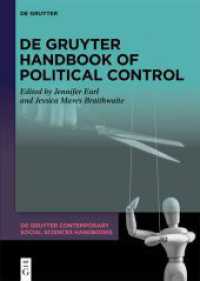Full Description
The appearance of this book in the series 'Tutorial Guides in Electronic Engineer- ing' is a reflection of the importance attached to control in electronics and electrical engineering curricula. Yet control engineering is essentially interdisciplinary in nature, and plays a fundamental role in many other areas of technology. I have therefore tried to make this text equally relevant to readers whose main interest lie outside electronics, by concentrating on general systems characteristics rather than on specific implementations. I have restricted myself to the 'classical' approach to single-input, single-output systems, since I feel this is the most appropriate subject matter for a first course in control. However, the Tutorial Guide style, with its detailed treatment of simple design examples, should also render the text useful to practising engineers who need to revise and apply dimly remembered material - or even to those whose training did not include control. is assumed to be familiar with complex numbers, phasors, and The reader elementary calculus.Apart from these topics, the mathematical requirements are of simple first- and second-order linear differential few, although prior knowledge equations would be useful.
Contents
1 Systems, objectives and strategies.- 2 General characteristics of feedback.- 3 Modelling dynamic systems.- 4 The frequency response approach to control system design.- 5 The s-plane and transient response.- 6 The root-locus technique.- 7 Steady-state performance.- 8 Controllers and compensators.- Appendix 1: Polar plots.- Appendix 2: The Routh-Hurwitz criterion.- Further reading.- A nswers to numerical problems.








